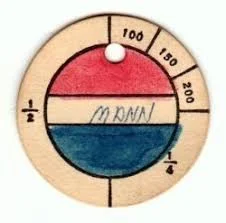PDQ BALLS
The other night we took the troop to the city pool to work on their swim checks. One rule that we have is that the boys are not allowed to jump into the pool without passing off the following acronym: PDQ Balls
- P - Physical Fitness. Scouts must present evidence of fitness for swimming with a complete health history from a physician, parent or legal guardian.
- D -Discipline. Everyone should understand that swimming is allowed only with proper supervision and consistent with the rules, which should be reviewed for all participants at the water’s edge just before the swimming activity begins.
- Q - Qualified Supervision. All Scout swimming activity must be supervised by an adult-in-charge who (1) is at least 21 years old, (2) is experienced in the water, (3) is confident of being able to respond in the event of an emergency, and (4) is trained in and committed to compliance with the eight points of BSA Safe Swim Defense. The adult must (a) have commitment card no. 34243, (b) be trained as a BSA Lifeguard, or (c) be accompanied by a Scout holding BSA Lifeguard training. It is strongly recommended, but not required, that an adult or older Scout trained as a BSA Lifeguard assist in the planning and conduct of all swimming activity.
- B - Buddy System. Every Scout must be paired with another Scout in the same ability group. Buddies should check in and out of the swimming area together and should be aware that they are responsible for life guarding each other. Using a single whistle blast, everyone in the water should be checked every 10 minutes, or as needed, to keep the buddies together (the buddies should be able to pair up in 10-15 seconds). Two whistle blasts signals a resumption of swimming and three whistle blasts signals checkout.
- A - Ability Groups. All participants (scouts, parents, siblings, friends, etc.) should be divided into three Ability Groups as follows: • Non-swimmers are those who have not passed any swimming test. • Beginners are those who have jumped feet first into water over the head in depth, leveled off, swum 25 feet on the surface, turned around and returned to the starting point [2d class requirement #7b]. • Swimmers are those who have jumped feet first into water over the head in depth, leveled off, swum continuously 75 yards in a strong manner using any recognized swimming stroke, turned over and swum 25 yards with an easy, resting backstroke, and then floated for one minute (so long as the test administrator is confident the swimmer can initiate the float when exhausted, it need not immediately follow the swimming segment) [1st class requirement #9b]. The swimming classification tests should be renewed annually, preferably at the beginning of the season. All persons (scouts, parents, siblings, friends, etc.) who will be at the waterfront or in the water must be classified.
- L - Lifeguards on Duty. In areas in which lifeguards are not otherwise provided, the Adult-in-Charge must designate a minimum of two capable Swimmers (see Ability Groups, above) as Lifeguards. They should be equipped with a lifeline (a 100 foot length of 3/8-inch nylon cord). In an emergency, one of the lifeguards can enter the water with one end of the line and, after effecting the rescue, be pulled back in by the other lifeguard. Depending on the number of people in the water, additional lifeguards must be provided so there is at least one lifeguard for every 10 swimmers. Lifeguards must not take their eyes off the water and should keep all swimmers clearly in view. They should avoid talking to others when on duty.
- L - Lookout. A Lookout must be stationed on the shore where s/he can see and hear everything (s/he may be the Adult-in-Charge and may also give the buddy signals).
- S - Safe Area. Any areas not regularly maintained and used for swimming must be examined for depths, currents, deep holes, rocks and stumps. All swimming areas must be marked for three groups as follows: • Non-swimmers should be restricted to an area not more than 3½ feet deep. This area should be marked with poles and twine or buoy lines. • Beginner swimmers should be restricted to an area in which the water reaches just over their heads. This area should be marked with poles and twine or buoy lines. • Swimmers should be restricted to an area not more than 12 feet deep (swimming is prohibited in water over 12 feet deep). This area should be marked with floats. In murky water, only surface swimming is permitted. For any entry into the water from more than 18 inches above the water, clear-water depth must be 10-12 feet and entry into the water is prohibited from more than 60 inches above the surface of the water. No one should be allowed to dive unless there is a clear-water depth of at least 7 feet and diving is prohibited from any height more than 40 inches above the water surface.
